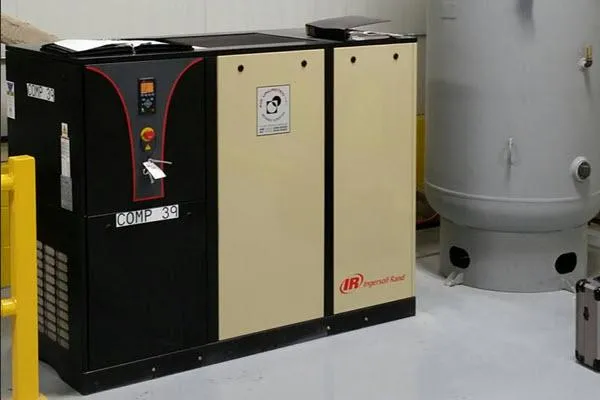
Turn Your Compressor into a Flowmeter
Just what is your leakage level? How efficient are your air compressors? These are questions you can answer for yourself with some quick and inexpensive tests involving a calculator and a stopwatch. The answers you find could surprise you.
For compressors that use load/unload controls, there is an easy way to roughly estimate the amount of flow the compressor is contributing to a system. The compressor will load and unload at a specific duty cycle corresponding to the percent loading necessary to maintain the pressure to within its control band. Total flow (percentage) can be calculated as follows:
Air demand on the compressor (%) = [(T x 100)/(T + t)]
where:
T = loaded time (seconds)
t = unloaded time (seconds)
Flow will be expressed in terms of the percentage of compressor capacity, if the estimated volume flow per minute during the test is your goal it can be roughly calculated by taking the rated compressor capacity in cubic feet per minute (taken from the model specifications) and multiplying it by the percentage derived.
To use this formula to calculate your leak levels start your compressor during a production shutdown when there are no demands on the system and bringing the system to normal operating pressure. All air- operated end-use equipment should be in the normally as left position. Open blowing applications should be isolated through shutoff valves if you don’t want to include these.
What leakage level did you find? The percentage leakage should be less than 10% in a well-maintained system. Poorly maintained systems can have losses as high as 20-40% of air capacity and power. Higher than this….well, you’ve got some work to do!
Leakage and other flow can be estimated in systems with other compressor control strategies. For instructions on how to do this tests see our fact sheet 7 at http://www.compressedairchallenge.org/library/factsheets/factsheet07.pdf
If you own compressors that run in load/unload control strategy you can do a quick efficiency test of your system by looking at the ratio of total loaded versus running hours in a given time period. For rotary screw compressors the loaded position is the only time where the compressor is actually producing compressed air efficiently; in unloaded running position, the unit will be consuming 20 to 35% of full load power, but producing no useful flow. A quick estimate of compressor efficiency can be done by taking the ratio of the total loaded hours divided by the total run-time hours. If you find the ratio is very low, say 50%, too many of the compressor hours are spent running unloaded, which is costly and wasteful, and further investigation is warranted. On well performing systems, with adequate installed storage receiver capacity and good compressor control, the target would be to have this ratio in the 90% or above range.
The CAC offers a wealth of information about leaks and related issues for download from our online library at www.Compressedairchallenge.org.
Check out our training at: www.compressedairchallenge.org/calendar
